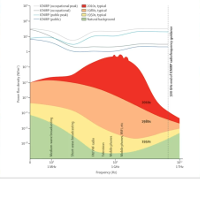

guido@lenie : $ iwconfig
wls1 IEEE 802.11abgn ESSID:"homewifi"
Mode:Managed Frequency:2.422 GHz Access Point: C0:C0:C8:0D:F7:64
Bit Rate=1 Mb/s Tx-Power=15 dBm
Retry short limit:7 RTS thr:off Fragment thr:off
Power Management:on
Link Quality=70/70 Signal level=-37 dBm
Rx invalid nwid:0 Rx invalid crypt:0 Rx invalid frag:0
Tx excessive retries:0 Invalid misc:6 Missed beacon:0
Canadian Cellular Towers Map Telus transceivers at Freq (MHz) BW Power (W) AZM Height (m) Elevation(m) 1900 10M 181.973 Omni 7 44 2100 10M 119.909 Omni 7 44 2100 20M 239.216 Omni 7 44

![[iphone 12 banned]](Screenshot_2023-10-02_at_15-39-46_List_of_recalled_or_updated_dangerous_cell_phones_th.png)
| Back to: "No preservatives added" |